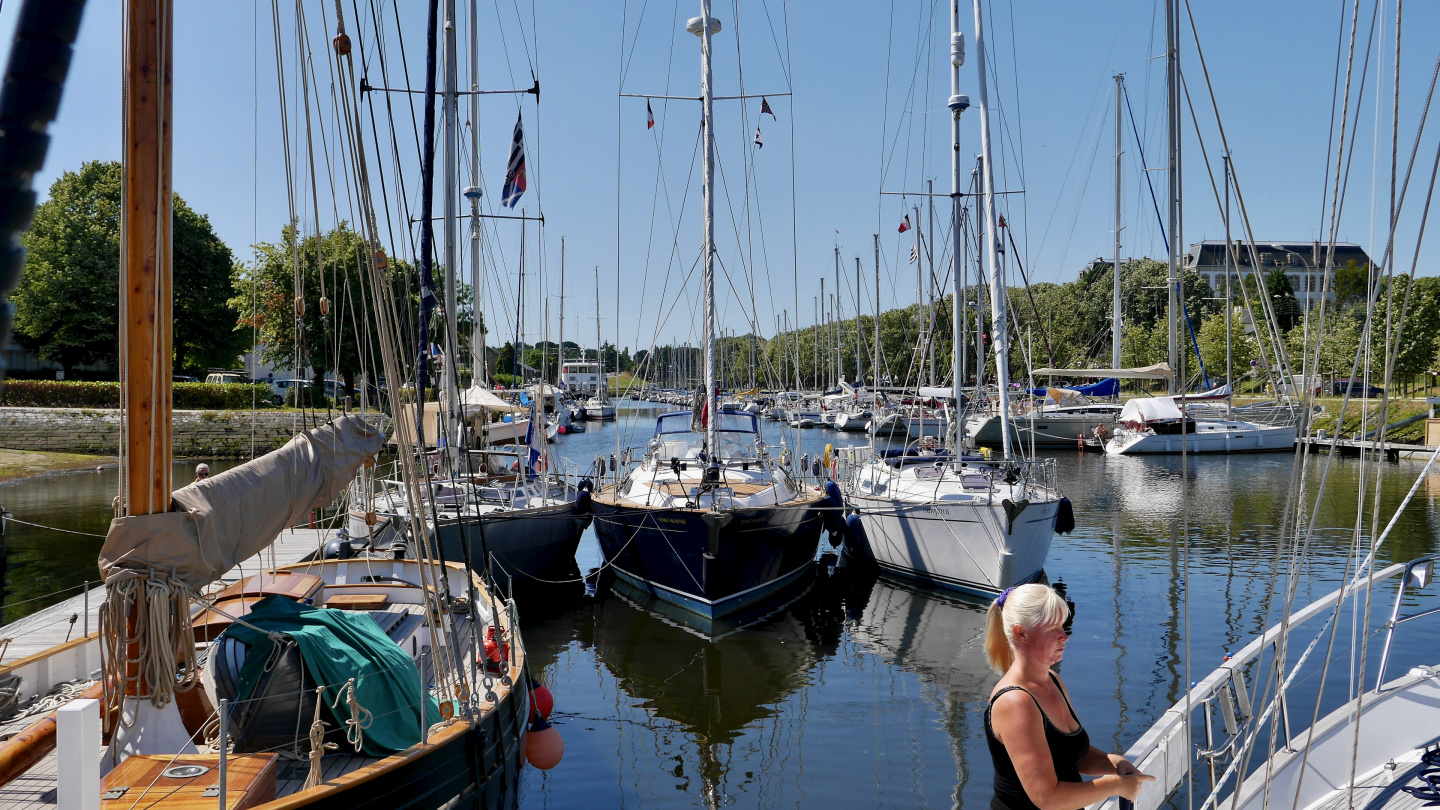Vannes is an attractive medieval town at the head of the Gulf of Morbihan. The distance to the mouth of Morbihan is only 10 nautical miles. However many sailors skip this gorgeous pearl. They think that it’s difficult to enter Vannes on a canal that almost dries at low water. The entering must be timed around the high water and it is challenging because the high water at Vannes is one hour and fifty minutes later compared to the mouth of Morbihan. We liked Vannes a lot and were glad that we came here.
The Vannes entrance is about a mile long dredged canal. The marina is behind the tidal gate and the drawbridge. The water level is partly very low and the marina can be accessed only on +- 2.5 h high tide when the tidal gate is opened. Actually the marina is part of the canal with the gate keeping yachts floating during the low water. Thus the harbour is atypically small for this area but everybody found mooring location along the canal or by rafting with another boat.
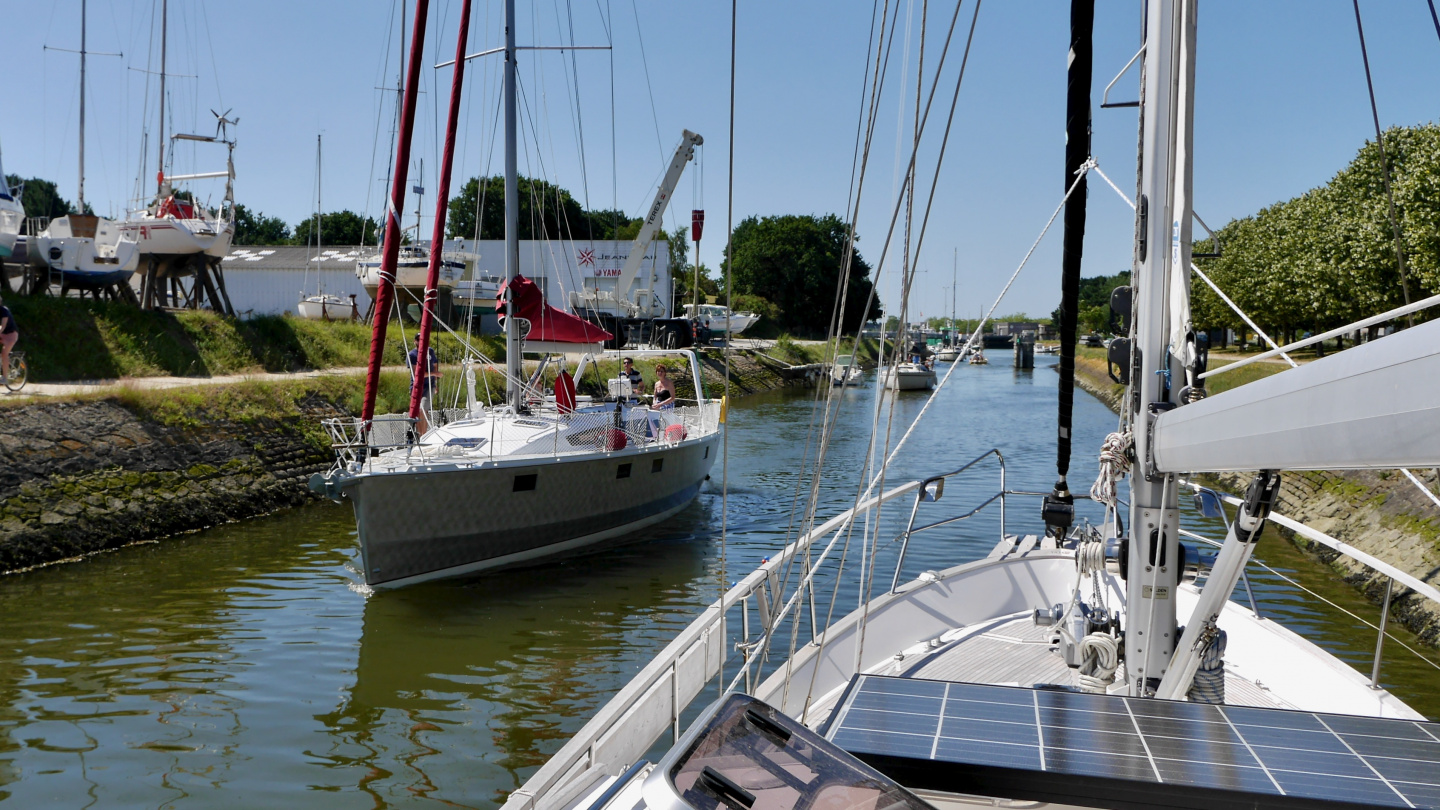
We tied Suwena alongside the dock at the end of the marina next to the floating pontoon footbridge. The bridge was rather noisy with people stumping on it. Especially at the weekend jumping on the bridge excited the partying young people. There was no help that to put our heads deeper and deeper into the pillow.
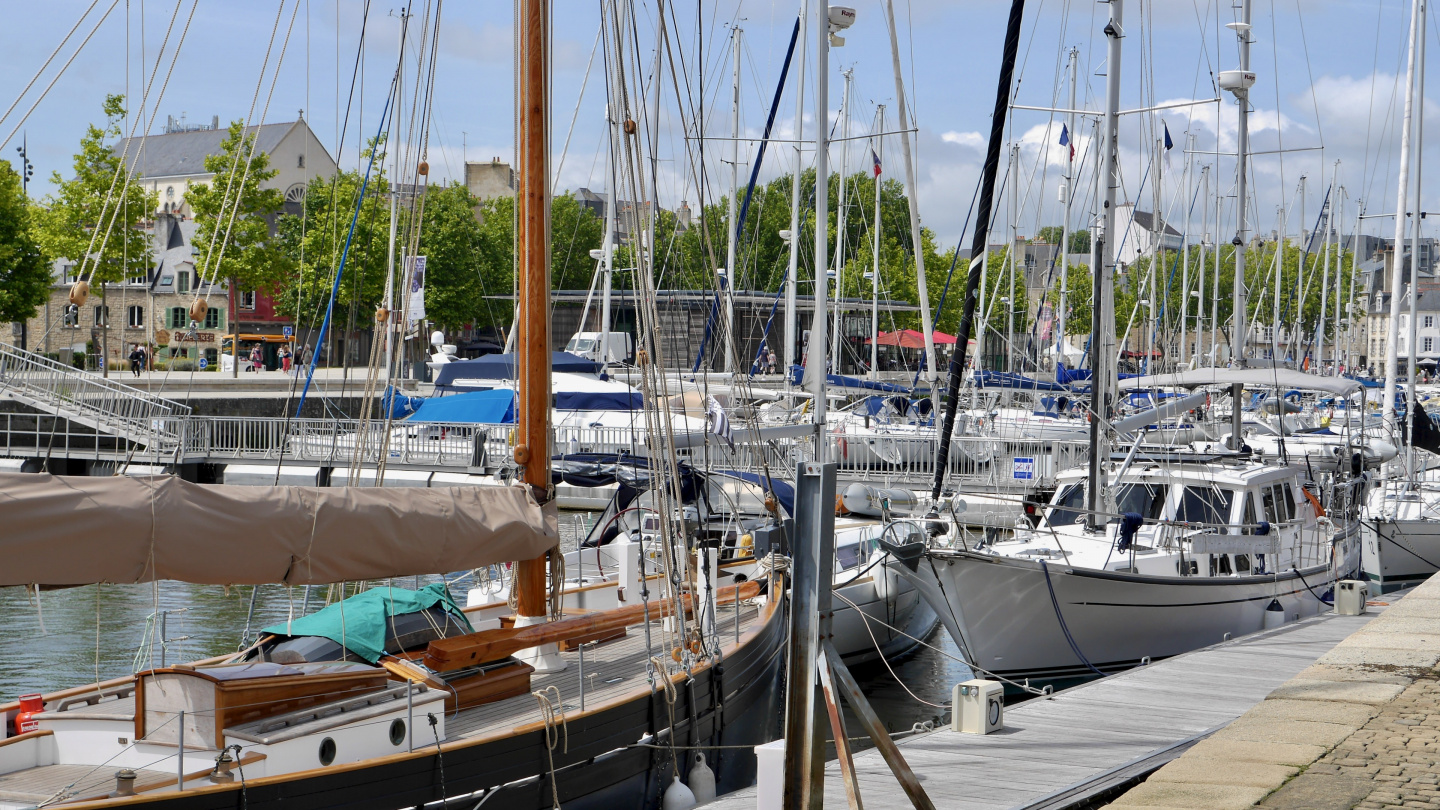
Vannes is one of the historical highlights in Western-France because fortunately it was survived the bombings of the Second World War. It has the history of 2000 years and was originally founded by Veneti, one of the five Celtic tribes living in this area. Veneti were a seafaring people who built strong boats from oak with sails made from leather. The fleet of Julius Caesar defeated them in 56 B.C. This naval battle of Morbihan was the first ever in recorded history that definitely took place in the North Atlantic. During the Roman times the town was called Darioritum.
Bretons have been expanding Vannes since the 5th century. The heart of the city is the 13th century’s the old town that is surrounded by a town wall. We slipped into the medieval streets from the main gate of Porte Saint-Vincent that is next to the marina. Narrow alleys and cobbled streets are intertwining each other with several squares popping up here and there, around the 13th century Saint-Pierre cathedral. Colourful half-timber Breton houses are reaching each other over the streets.
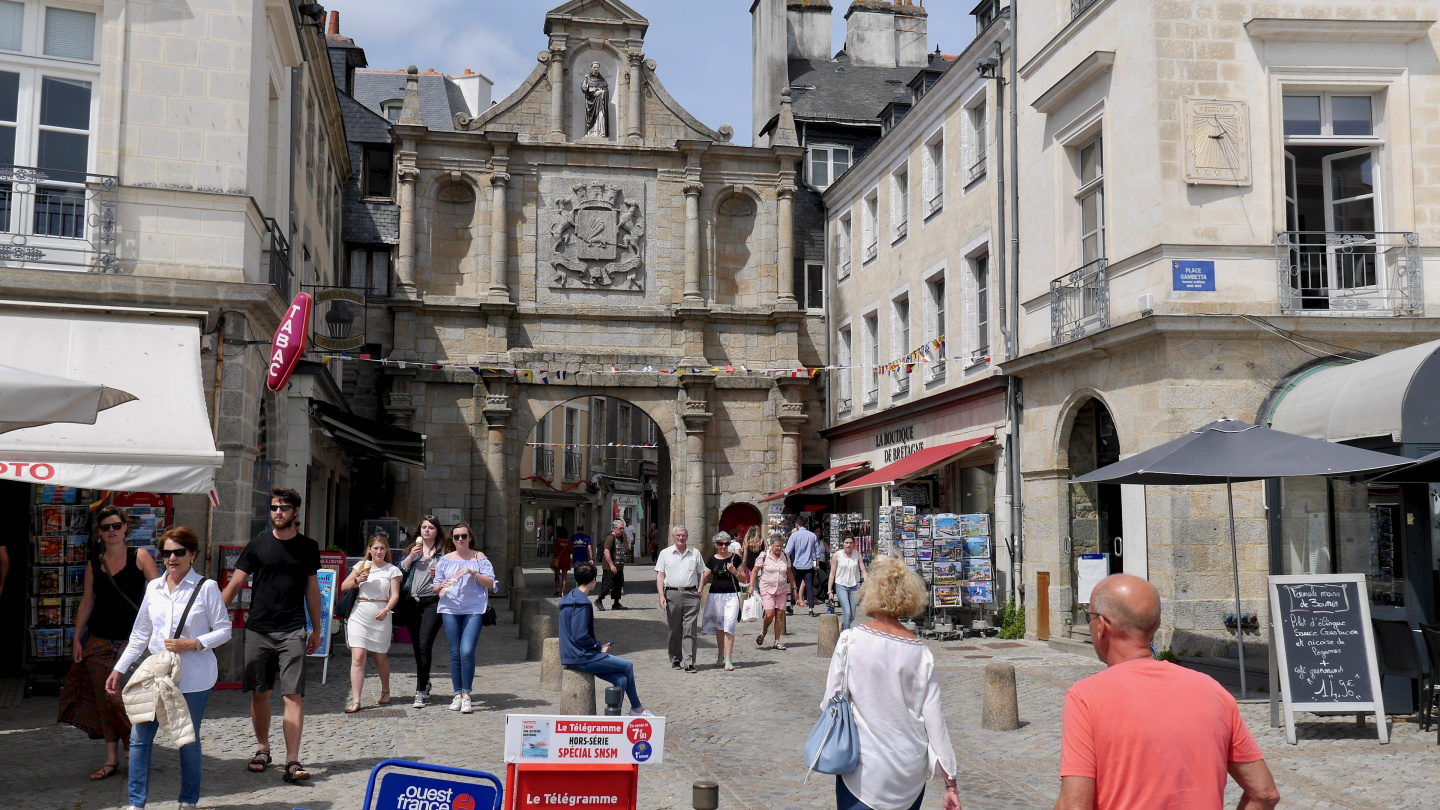
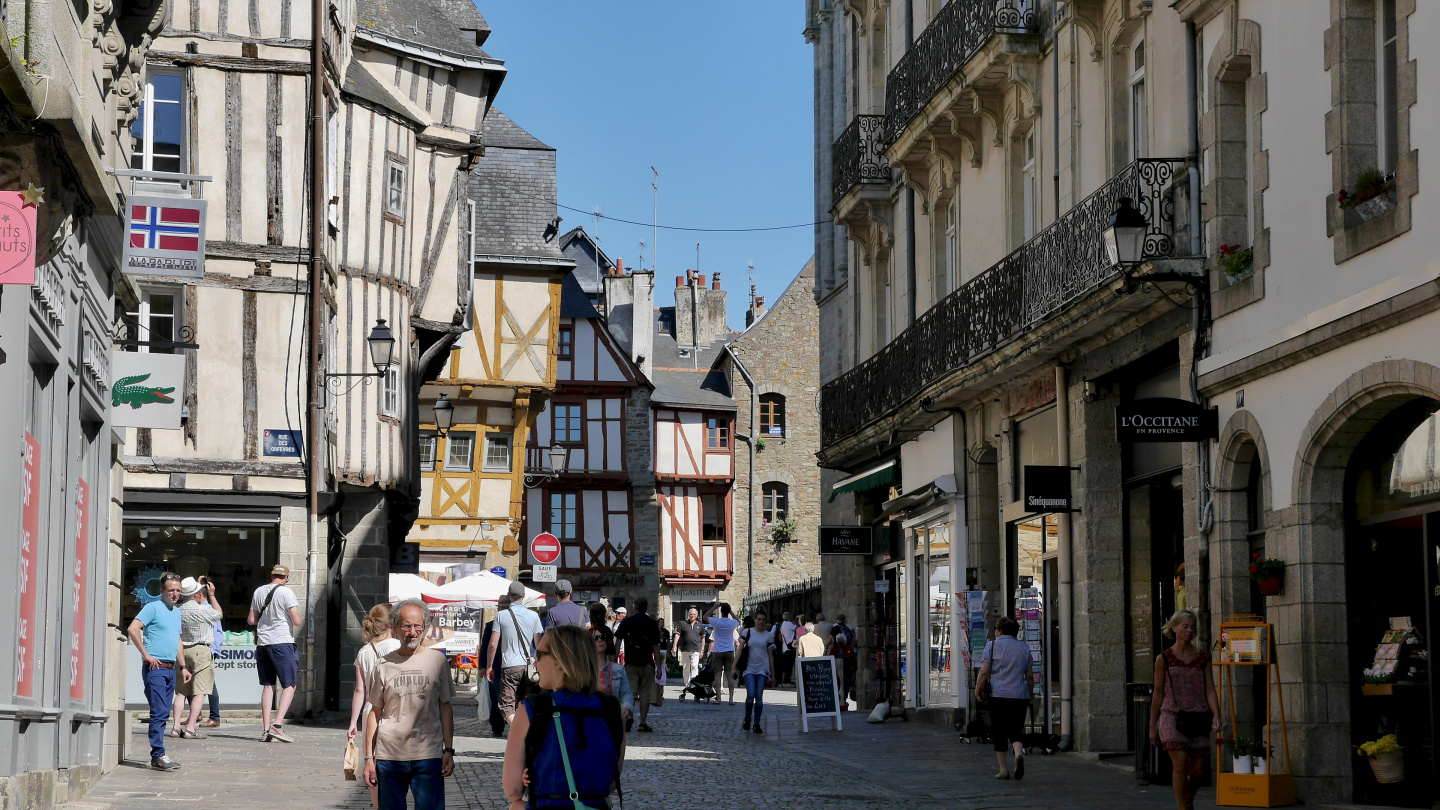
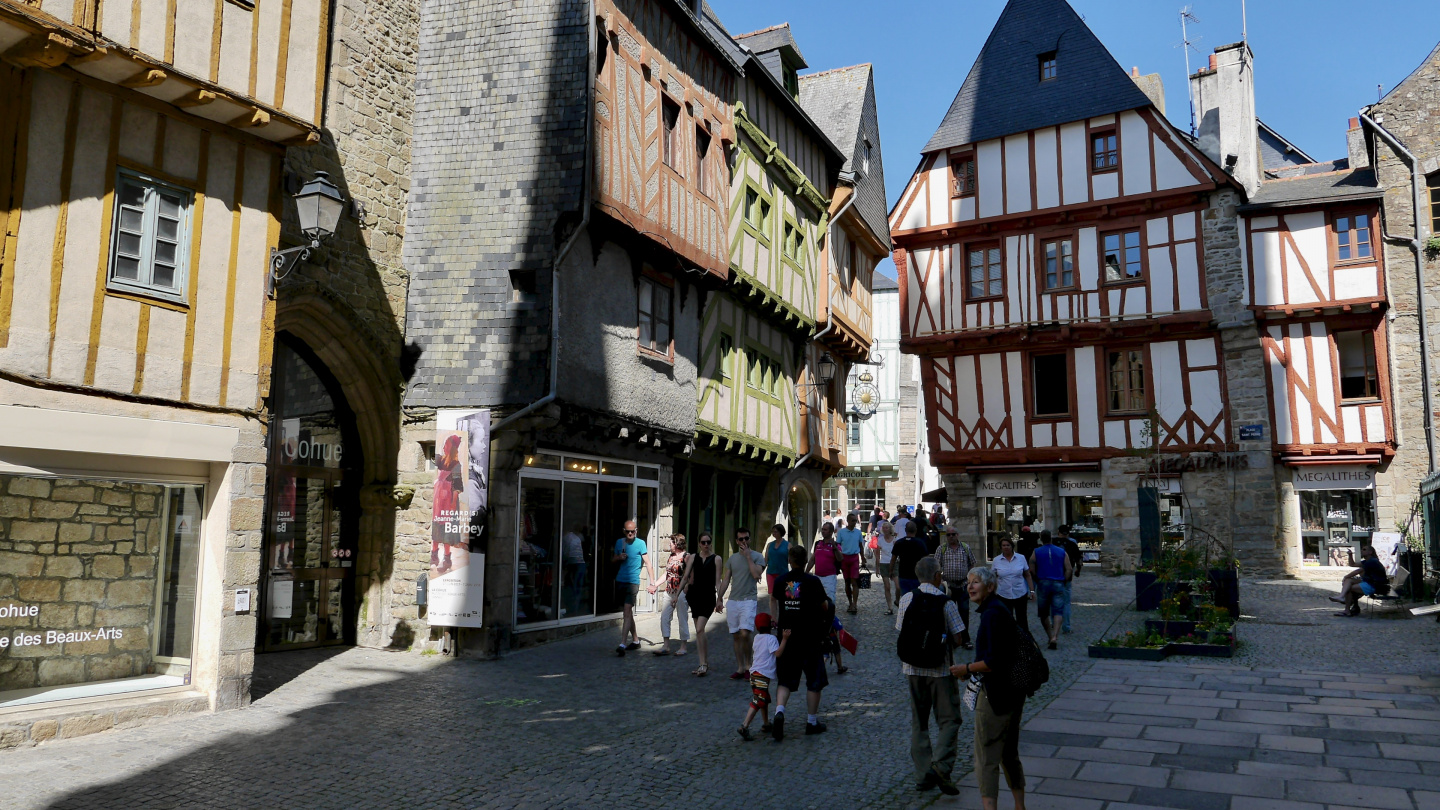
During our visit on Wednesday and Saturday, the old town was filled with a market where merchants were promoting their products by lureing with beautifully flowing French. The old town is full of small shops from pâtisseries to fashion boutiques. We also replenished our storage of Belle-Iloise with mouth-watering curry mussels and refreshing AquaRosa tea from Kusmi which we use for making the rejuvenating ice tea.
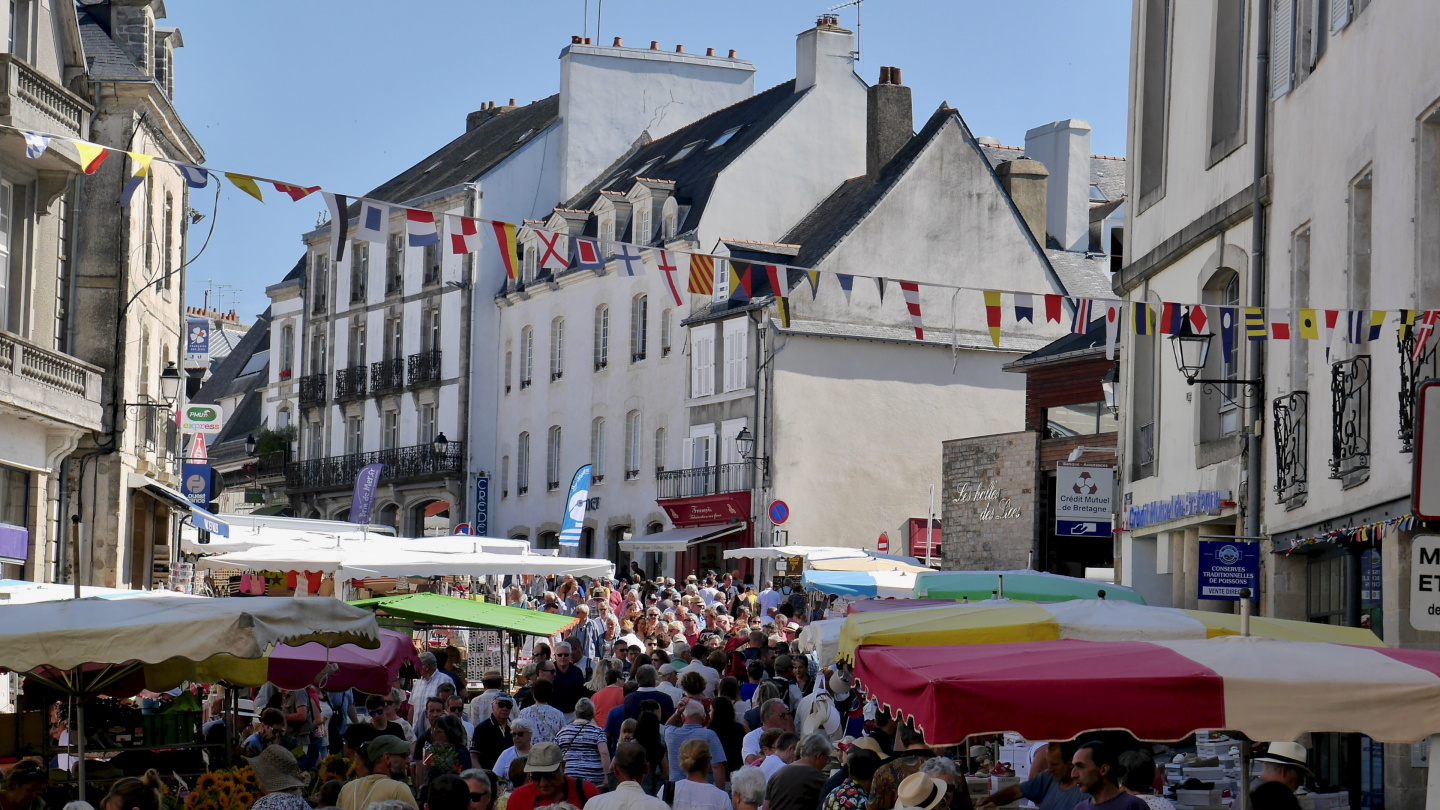
There are a couple of smaller supermarkets in the old town. The bigger markets are outside of the centre with a good bus connection. It took only 15 minutes and we were in the shopping centre with jumbo sized Carrefour. The bus stop is just in front of the marina and buses run every 10 minutes. Taking a bus is also an easy way for getting out of the town.
Vannes is really a charming town and no wonder that the dukes of Brittany had residence there. They were living in the palace of Château de L’Hermine in the 14th to 16th century. Our days in Vannes were filled with shopping and strolling in the medieval streets thus the palace have to wait for our next visit in Vannes.
